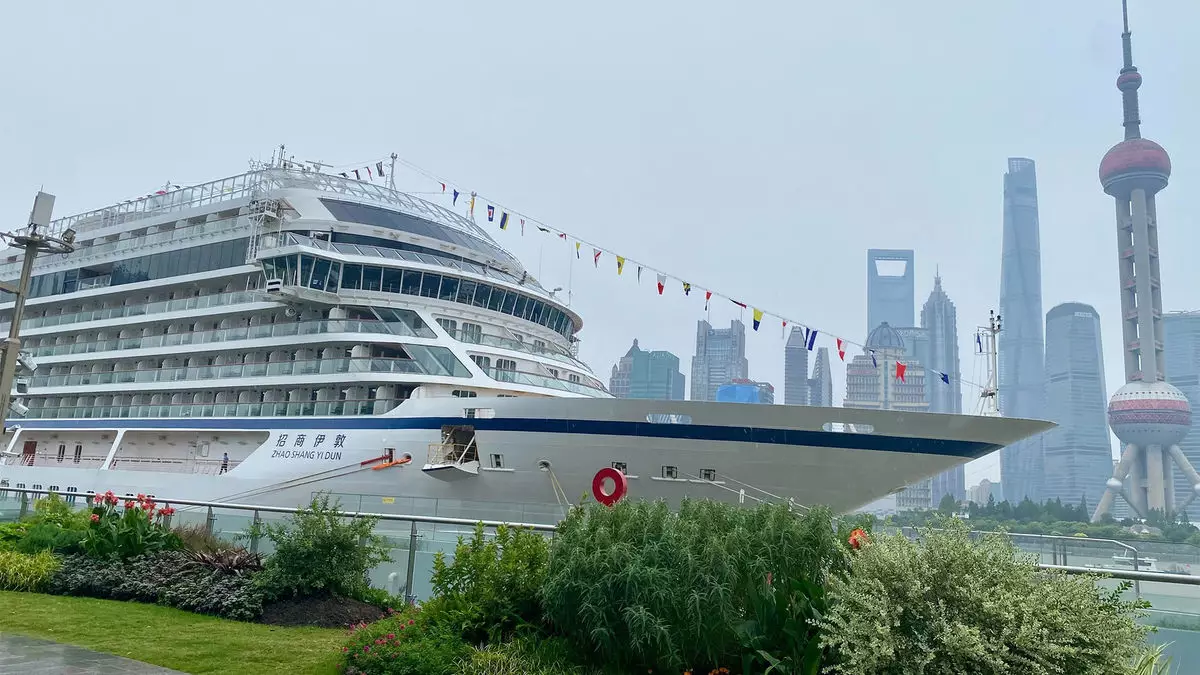The cruise industry is evolving, marking a pivotal shift that addresses the growing interest of global travelers. One of the latest highlights is Viking’s introduction of ocean cruises tailored for English-speaking audiences in China. This venture, which is a remarkable intersection of Western and Eastern travel preferences, invites exploration beyond traditional routes and offers a fresh perspective on Chinese culture through a cruise experience.
Viking River Cruises had previously sailed in China, primarily on the Yangtze River, just as the pandemic began to unfold in early 2020. Fast forward four years, and the company re-enters the fray with its ocean-going vessels, starting with the Yi Dun. This transition is not simple; it underscores Viking’s dedication to embracing change amid the shifting landscape of global tourism. The inaugural journey from Shanghai to Shenzhen marks a significant moment in Viking’s history, as they expand their operations to cater to English-speaking clients looking to experience the unique charm of China’s coastline.
The Yi Dun journey showcased several ports with diverse cultural offerings, including Zhoushan and Xiamen, which are typically overlooked by international cruise lines. This exclusivity not only enhances the travel experience, allowing tourists to immerse themselves in lesser-known locations, but also highlights Viking’s strategy in creating a unique product for its audience.
One of the most notable aspects of the Yi Dun is its dedication to blending Western and Chinese cultures, particularly in its culinary offerings. Passengers are treated to authentic Chinese cuisine while still finding familiar Western options. Viking successfully tailors its menu to accommodate varied tastes, showcasing dishes such as dim sum for breakfast and featuring a “Taste of China” lunch selection. This careful balance elevates the dining experience, allowing guests to savor the rich tapestry of flavors while still providing a nod to Western-style fare.
Moreover, the ship’s design embodies a Scandinavian aesthetic enriched with Chinese elements, such as art installations that promote local culture. The presence of over 200 Buddhas and the dynamic artistic projections throughout the cruise ship adds a unique touch, making the vessel itself part of the cultural experience rather than merely a mode of transport.
Viking’s innovative approach bifurcates its audience, capturing both the Western and Chinese markets. As discussed by industry experts, history hasn’t shown many English-speaking cruise lines consolidating a China-only itinerary, making this a daring experiment. Viking aimed not only to re-engage the Western market that had receded during the pandemic but also to build a rapport with Chinese customers who exhibit a penchant for family-centric travel experiences.
Viking’s pivot away from the adult-only cruise model to accommodate family travel demonstrates adaptability in the face of changing market demands. It acknowledges notions of different leisure preferences, as highlighted by industry insiders, who recognize that gaming amenities, often preferred by domestic travelers, have not been included in the Yi Dun’s offerings. This thoughtful consideration of varied guest experiences is a commendable aspect of Viking’s planning.
However, the return of tourism to China has been sluggish, with inbound travel hovering at less than 60% compared to pre-pandemic levels. This reality presents both challenges and opportunities for Viking. Although the initial bookings for their English-only cruises have shown promise, the larger market dynamics will influence future cruise offerings. Viking’s strategy of extending westward travel while simultaneously nurturing local demand seems founded on caution and ambition.
Moreover, the crew’s communication barriers with guests highlighted potential weaknesses that could affect passenger satisfaction. While Viking worked hard to prepare the Chinese crew for English-speaking guests, the apparent gap could diminish overall guest experience if not continually addressed.
Planning for the future, Viking’s CEO has hinted at the possibility of resuming river cruises for Western tourists in China, reflecting an strategic eagerness to expand offerings further once the tourism market stabilizes. As Viking navigates uncharted waters, it is clear that the journey taken by the Yi Dun will become a comprehensive case study reflecting the interplay of cultural integration and business strategies within the cruise industry.
As the cruise ship sails into the horizon, one thing is definite: Viking is not just sailing; they are crafting an influential narrative that could redefine how cruises are experienced in an increasingly interconnected world. Exploring both familiar and new oceans, Viking is steering the cruise industry towards rich, cultural odysseys that promise generous rewards for both the company and its journeying patrons.


Leave a Reply